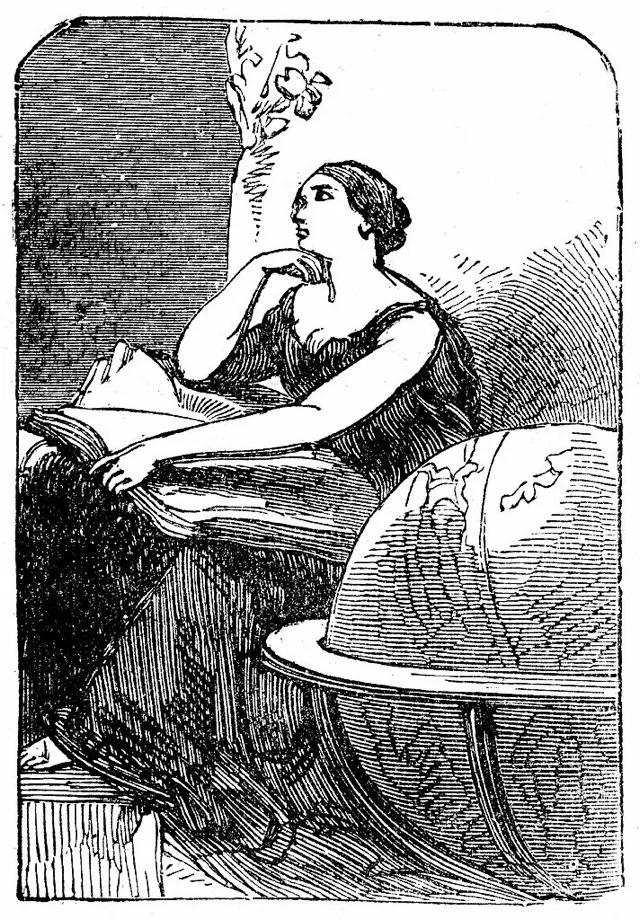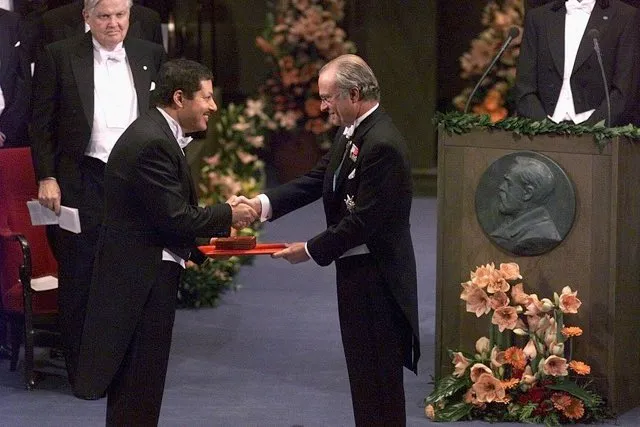From ancient Egyptian alchemists to the man who used modern lasers to measure reactions in what seem impossibly short periods of time - the science of chemistry has had more than a few pioneers in its long history.
Here are three of incredible scientists from the new book The History of Science in Bite-sized Chunks, by Nicola Chalton and Meredith MacArdle, who changed our understanding of the chemical world.
Ancient Elements, Early Science and Alchemists: Hypatia
For a large chunk of history, humanity made do with just a handful of material elements.
There were five elements in some ancient cultures; for example, Babylon had wind, fire, earth, sea, sky; and China had earth, fire, water, metal, wood. But the classical four – earth, air, fire and water – were all that were recognized in the West for centuries, although the Greek Aristotle added a fifth, unchanging, heavenly element, aether.
Around the third century BCE, the centre of learning in the classical world began to shift from Athens to Alexandria in Egypt. Living in this city hundreds of years later was one of the world’s first female scientists, Hypatia. As a scholar, she began exploring the properties of liquids. She may have discovered that elements can take different forms and yet remain the same elements, for example, water can be frozen into ice and iron can be heated until molten, but it would be a long time before scientists understood that it is the changing arrangement of an element’s molecules that determines its physical form.

Hypatia’s knowledge was restricted to more visible properties, but she is credited with inventing a hydrometer to measure the relative density and gravity of liquids.
While Hypatia was observing, testing and inventing, others in Alexandria were doing the same thing for different reasons. Alchemy is thought to have begun in the city around the fourth century CE, as magic and the occult began to permeate. Alchemists mainly sought magical secrets or to transmute base metals into gold.
The word ‘chemistry’ comes from ‘alchemy’, which probably derives from the ancient name for Egypt: Khem. The alchemists of the Middle East and Europe unwittingly helped develop chemical knowledge (for example, of metals) and techniques, such as Alexandrian alchemist Mary the Jewess’ bain-marie, still used today to gently heat ‘vital’ substances like chocolate or caramel.
Read more:
- As history proves, women in science need more than just a lab coat
- 10 amazing women in science history you really should know about
The Chemical Revolution: Antoine-Laurent Lavoisier
By the mid-eighteenth Century new substances had been discovered and named; for example phosphorus, found through a convoluted process of treating urine. Through more salubrious means, carbon dioxide (‘fixed air’), hydrogen (speculated to be ‘phlogiston’, the essence of fire), nitrogen (known as ‘phlogisticated air’) and new metals (actually elements) such as barium, molybdenum and tungsten were found. Scientists were also approaching a greater under-standing of compounds, or how substances combine.
In 1789 the French chemist Antoine-Laurent Lavoisier published a table of elements, finally listing more than the classical four, even though some of his thirty-three were wrong. Working with other scientists, Lavoisier also developed a new naming system for chemicals, which is fundamentally the one used now to reflect substances’ known compositions.

A wealthy man, Lavoisier had a beautifully equipped laboratory where, although he seldom originated work, he was able to confirm and attempt to explain others’ ideas, sometimes causing arguments about precedence, particularly with British chemist Joseph Priestley (1733–1804) over the discovery of oxygen.
Lavoisier’s particular achievement was to demonstrate the role of oxygen in combustion, laying to bed the theory that ‘phlogiston’ or heat in the air was responsible. Through careful measurements in sealed containers, Lavoisier showed that ‘dephlogisticated air’, as Priestley called it, was the substance burnt up in air, and was the same substance that was absorbed from air by metal residues after heating. He called this gas ‘oxygen’ meaning ‘acid generator’ since he mistakenly thought that is what it also did.
So Lavoisier named the air that we breathe, and his standardization of chemical descriptions and methodology meant that he helped revolutionise chemistry.
Read more:
- Which elements are in danger of running out?
- It's elemental: how to become a periodic table pub quiz champion
Femtochemistry: Ahmed H. Zewail
Chemical reactions happen so quickly that they can only be described in tiny divisions of a second, known as femtoseconds. One femtosecond is just 0.000000000000001 of a second, or 10-15. During the transition state of a chemical reaction the atoms of a molecule move extremely rapidly, taking less than 100 femtoseconds to rearrange themselves.
In the 1970s most scientists thought that it would never be possible actually to see what happens during such a fast reaction. But working at the California Institute of Technology, the Egyptian-born chemist Ahmed Zewail (1946–2016) realised that the recently developed technology of fast lasers might supply the sort of super-fast ‘camera’ that chemistry needed.
Fast lasers are able to produce flashes of light that last just a few femtoseconds in duration, and in the 1980s Zewail began to experiment by using a series of flashes to initiate a chemical reaction and record the changes.

Zewail eventually developed a process involving mixing molecules in a vacuum tube and then beaming pulses at the mixture from a fast laser. The first flash of light energises the chemicals, starting the reaction, then subsequent beams of light record the resulting light patterns or spectra from the molecules. These can then be analysed to see how the molecules are structurally changing.
To a chemist, this was the revolutionary equivalent of watching as the chemical bonds are broken and reformed. Instead of just imagining what was happening to atoms and molecules, they were now able to ‘see’ chemical reactions, and more easily plan experiments and predict results.
Zewail’s technique became known as femtosecond spectroscopy, or femtospectroscopy, and the whole body of work became the new field of physical chemistry called femtochemistry. It offers important applications in areas ranging from the development of medicines to the design of electronics. Zewail himself called it the ultimate achievement in the race against time.
The use of techniques from physics is clearly an important part of chemistry’s future, from the possibility of building structures out of water to silicon nanotubes. The periodic table is not full up, and there are compounds yet to be synthesised. The alchemists of tomorrow will have plenty on which to work their magic.
The History of Science in Bite-sized Chunks by Nicola Chalton and Meredith MacArdle is available now (£7.99, Michael O’Mara)
Follow Science Focus onTwitter,Facebook, Instagramand Flipboard